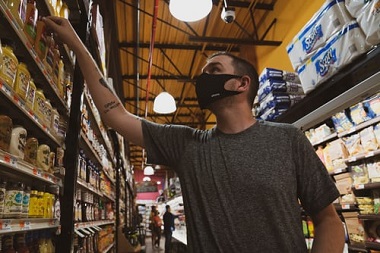Until they tell you to stop
Oregon Occupational Safety and Health (OSHA) has
adopted a rule to maintain social distancing measures for workers across the state against the coronavirus.
Although the rule includes several changes since the rule was proposed in late January, the basic requirements are largely the same as they have been since 2020.
Oregon OSHA states the rule will be repealed when it is no longer needed. As with the temporary rule it replaces, the rule includes such health protection measures as physical distancing; use of face coverings; employee notification and training; formal exposure risk assessment and infection control planning; and optimization and maintenance of existing ventilation systems.
One of the most significant areas of public comment concerned the lack of a specific sunset date or other trigger to automatically repeal the rule.
Oregon OSHA determined that the ongoing Covid outbreak require that the rule be indefinitely extended.
Oregon state law does not allow a rule using that temporary process to be in place more than 180 days.
“We reviewed all of the comments – including the many comments that opposed the rule – and we gave particular consideration to those comments that explained their reasoning or provided concrete information, said Michael Wood, administrator of Oregon OSHA. “Although we chose to move forward with the rule, the final product includes a number of changes based on that record."
“At the same time, we are keeping in place key protections for workers as part of Oregon's larger and ongoing project to defeat COVID-19," Wood said. “To allow the workplace COVID-19 protections to simply go away would have left workers far less protected. And it would have left employers who want to know what is expected of them with a good deal less clarity than the rule provides."
Because Oregon OSHA determined it is not possible to assign a specific time for a decision to repeal the rule, Oregon OSHA has committed to consulting with the Oregon OSHA Partnership Committee, the two Infectious Disease Rulemaking Advisory Committees, the Oregon Health Authority, and other stakeholders to help determine when the rule can be repealed.
A D V E R T I S E M E N T

A D V E R T I S E M E N T
The first of these discussions will take place no later than July 2021, and will continue every two months until the rule has been repealed. The indicators factoring into the decision will include infection rates (including the rate of spread of COVID-19 variants), positivity rates, and vaccination rates, as well as hospitalizations and fatalities.
While the final rule broadly reflects the temporary rule, it also includes some significant changes. Those include:
- Reducing the number of industry-specific appendices by six and limiting such requirements specifically to those involving worker protection (which reduced the length of the appendices, and, therefore, of the entire rule, by more than 50 pages)
- Dramatically reducing the K-12 schools appendix and removing all references to cohorts and square footage limitations, as well as physical distancing between students.
- Requiring employers to consider alternatives to transporting multiple people in a single vehicle and providing other guidance about reducing risk while sharing vehicles. The rule does not, however, require using multiple vehicles to transport multiple employees.
- Requiring employers with more than 10 employees – and that have existing ventilation systems – to state in writing that, to the best of their knowledge, they are running their systems in line with requirements. The final rule does not require the purchase or installation of new ventilation systems.
- Reducing required sanitation measures to reflect the most up-to-date Centers for Disease Control and Prevention guidance.
- Requiring employers to provide written notification to employees of their rights to return to work when employees must quarantine.
- Requiring health care employers to provide respirators to employees working with known or suspected COVID-19-positive patients, unless such respirators are unavailable.
The final rule also makes clear that the risk assessment, infection control plan, and infection control training completed under the temporary rule do not need to be repeated as a result of the adoption of the final rule.
--Bruce Armstrong| Post Date: 2021-05-04 22:30:01 | Last Update: 2021-05-04 23:03:37 |







